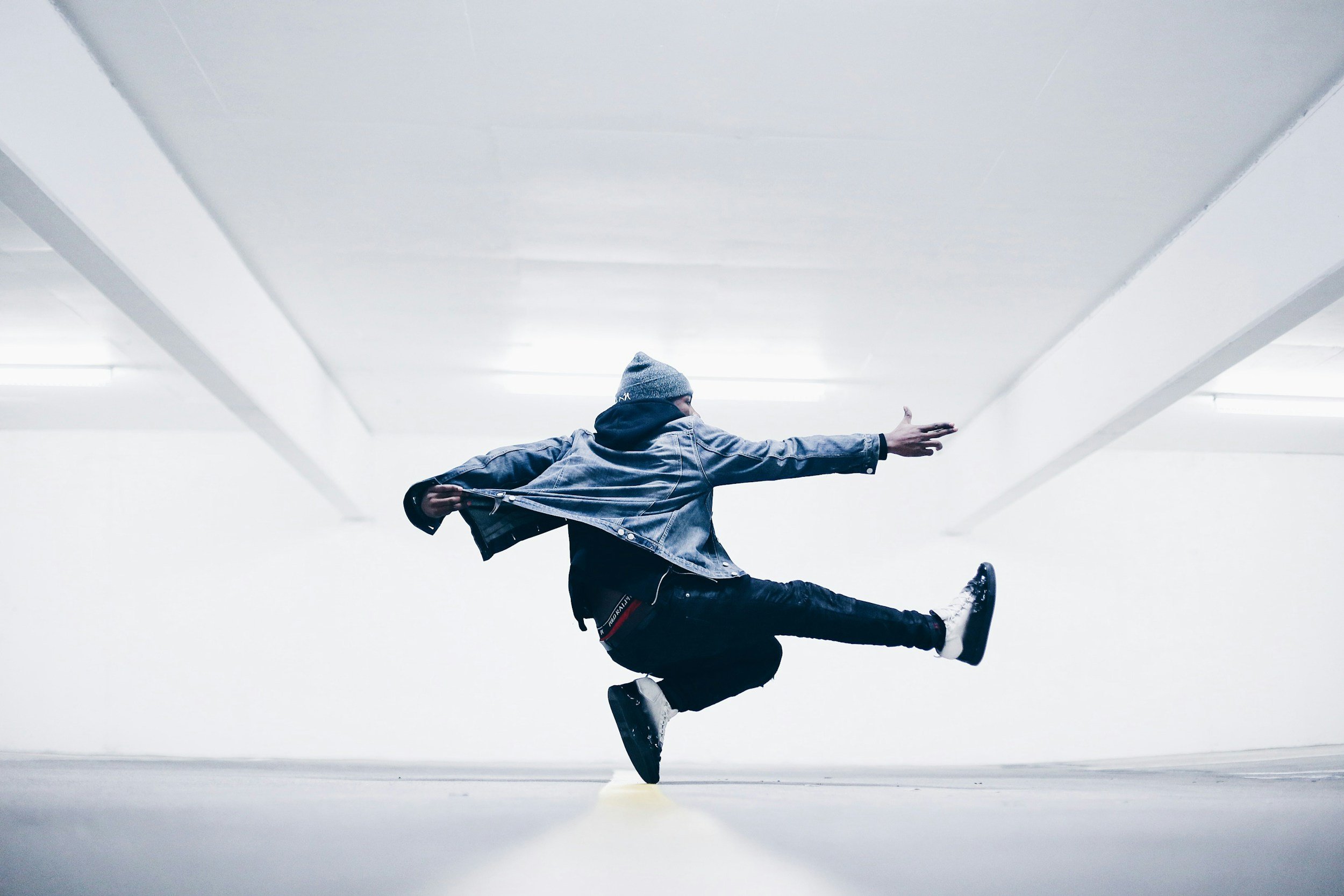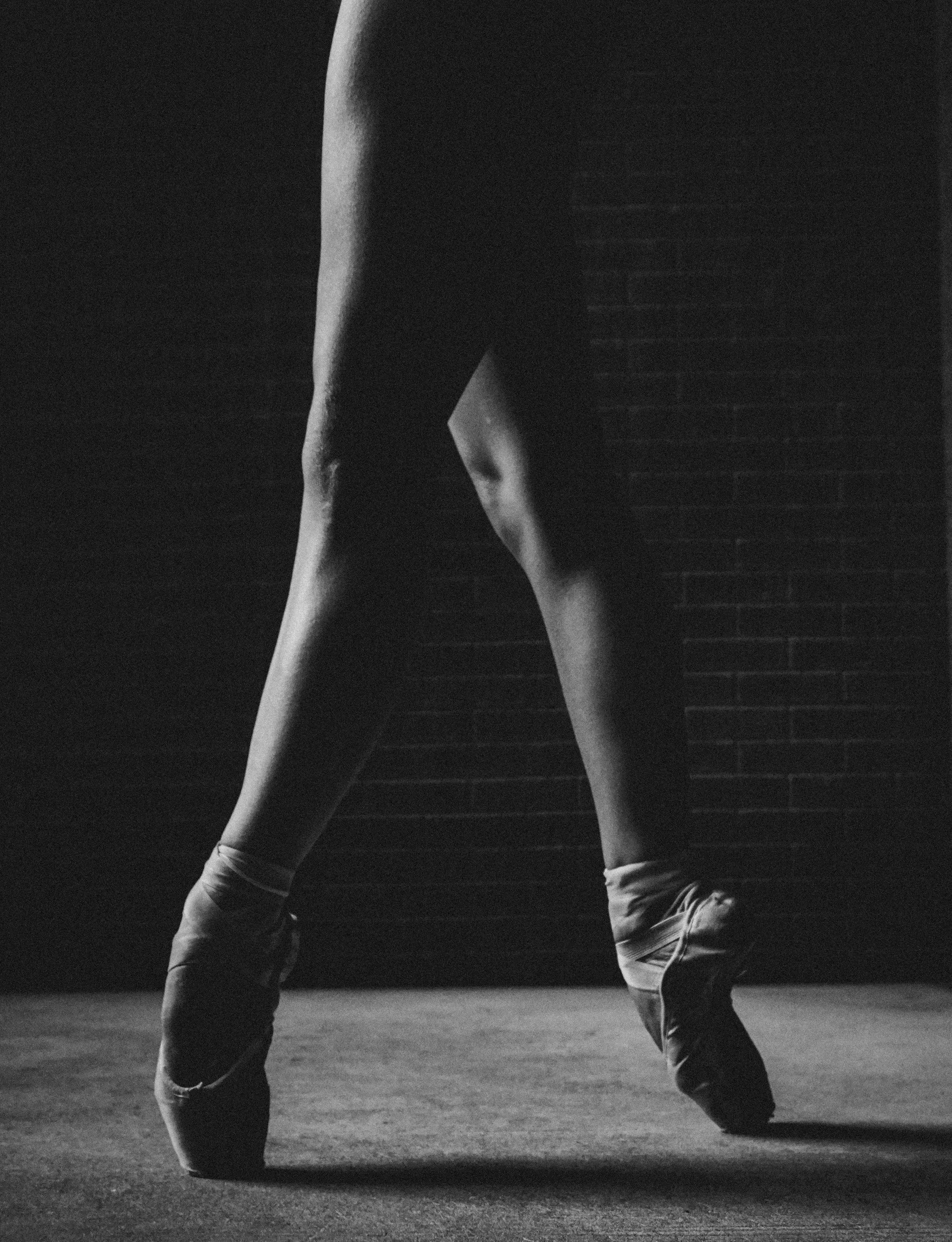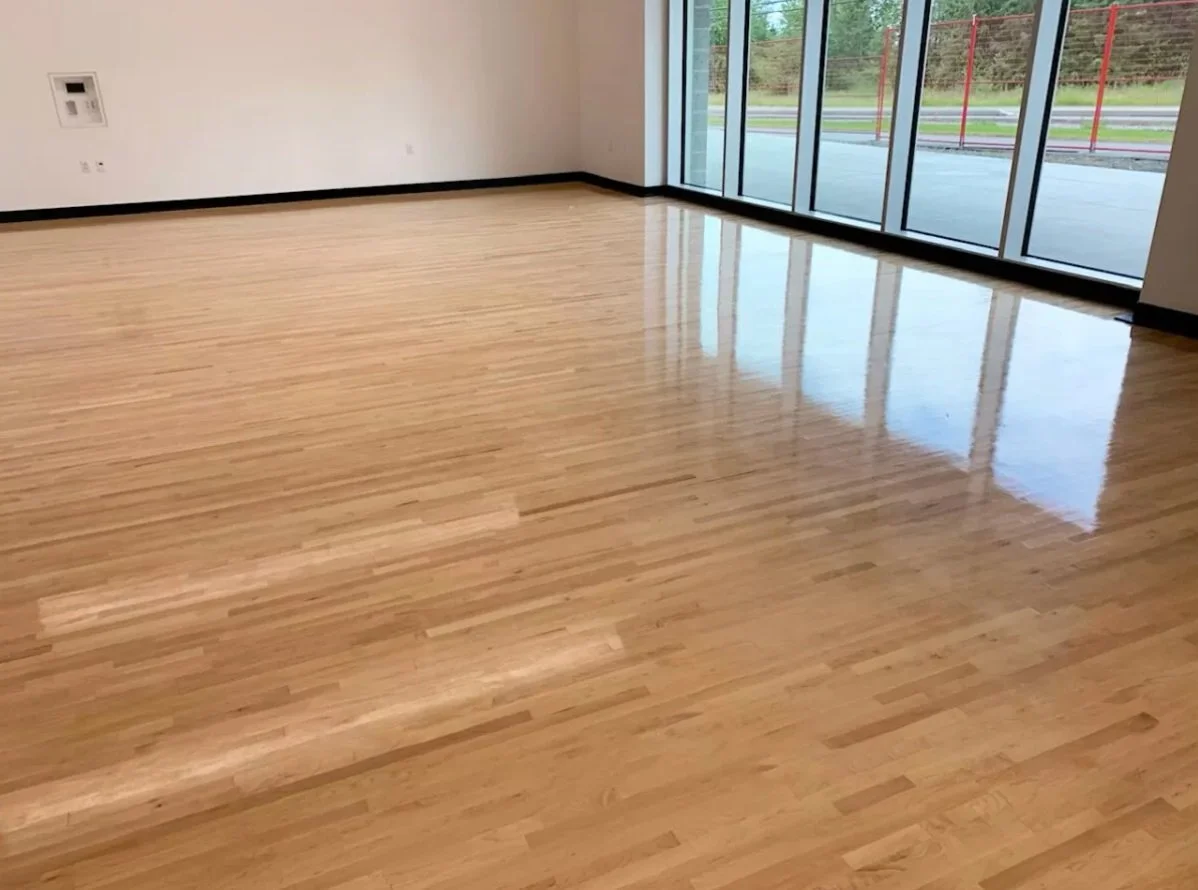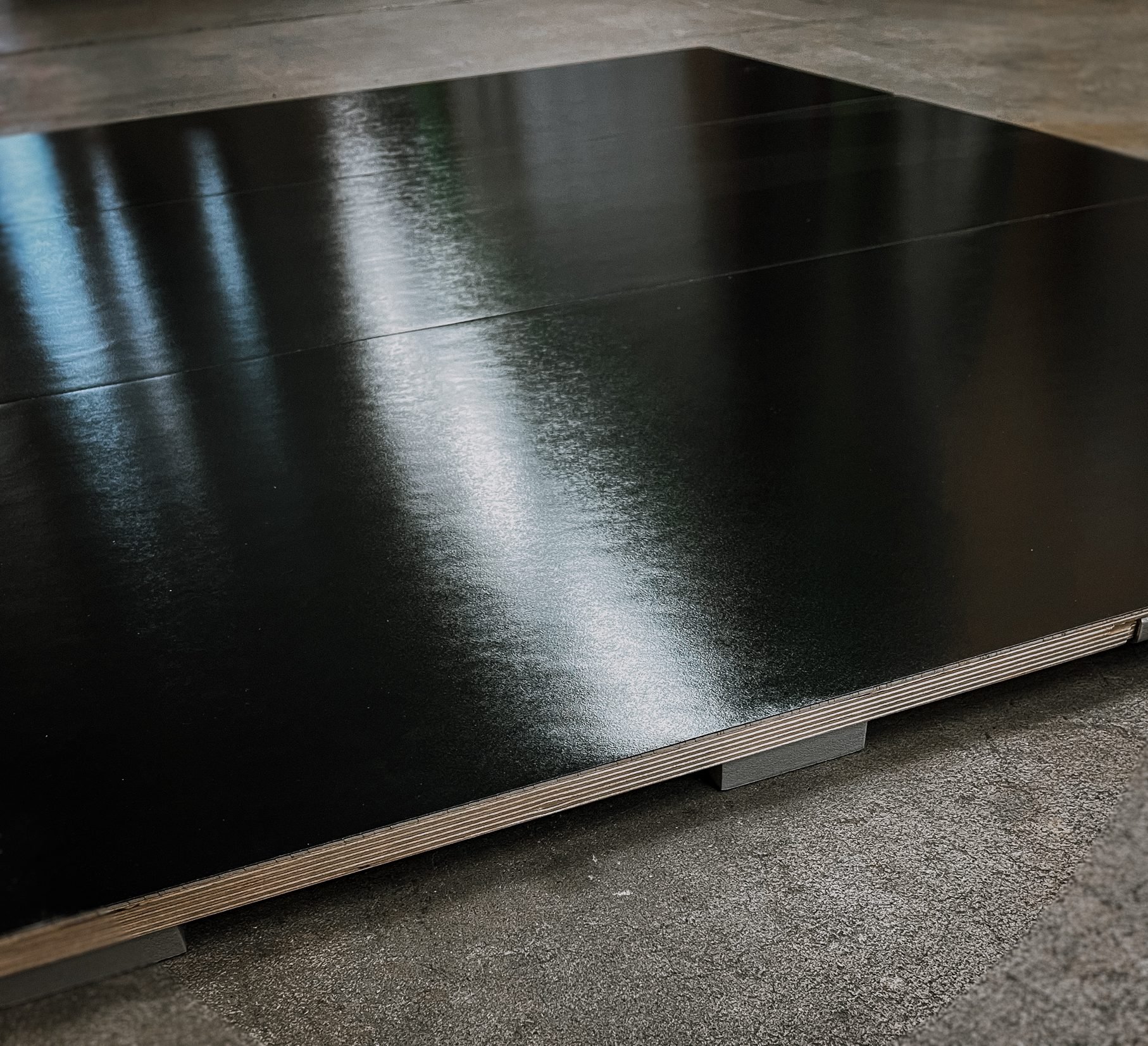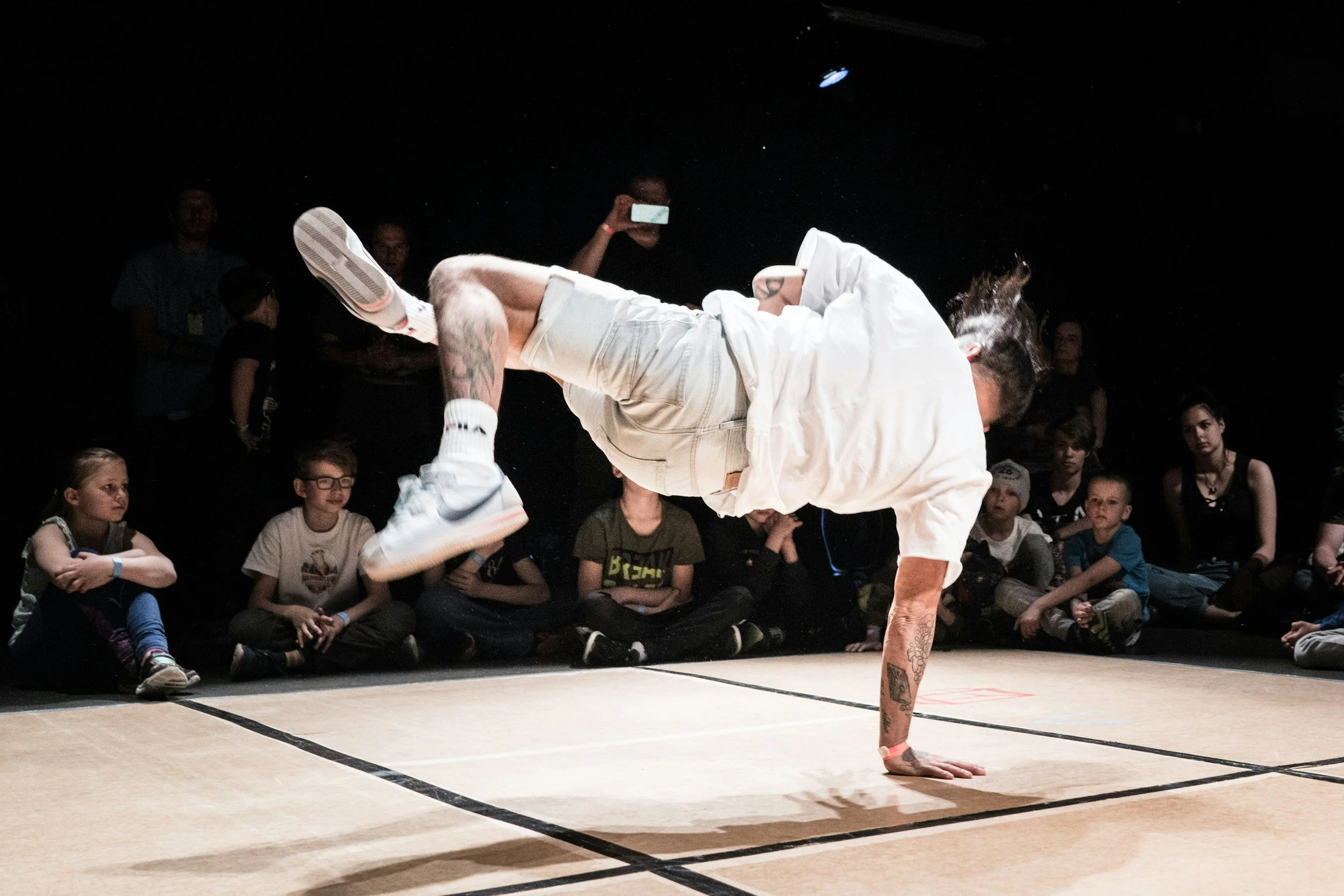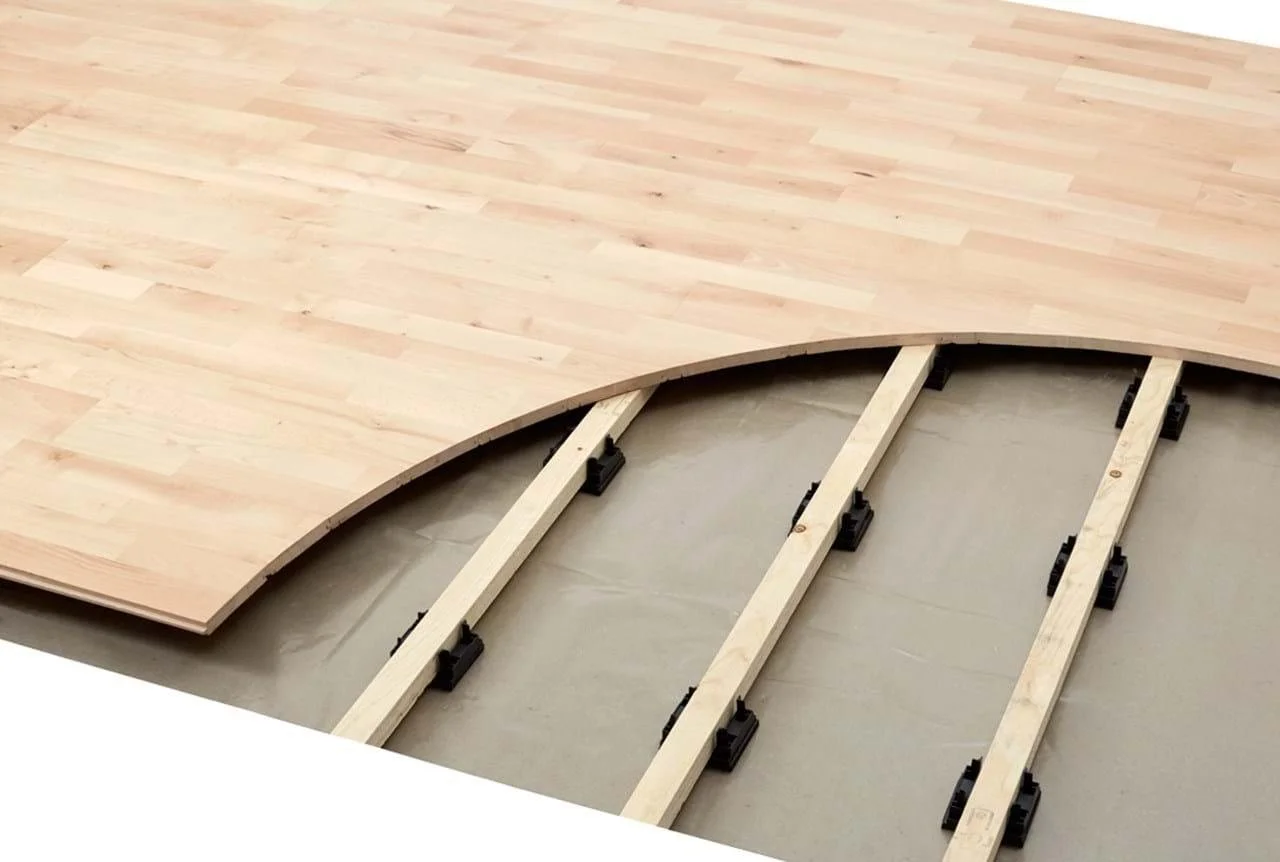
ENVIRONMENTAL RISK FACTORS
FOOTWEAR
BACKGROUND:
A systematic review by Fong Yan et al. (2011) emphasized that footwear can enhance or restrict movement, which may lead to incorrect technique, muscle imbalances, and inadequate support during high-impact movements like jumps and landings.
The repetitive nature of loading that occurs during dance rehearsal and performance, in combination with the excessive forces and pressures placed on the foot by dance footwear, are contributing factors in overuse injuries.
Selecting the right footwear isn’t just about style—it’s about finding the perfect balance between comfort and performance. Understanding your style’s requirements is the first step. Imagine trying to perfect a pirouette in shoes that don’t support your arch or attempting to leap in sneakers that don’t offer the right grip.
Here are factors to consider when choosing footwear:
(Menz & Bonanno, 2021)
-
Select the shoe that meets the style of dance, but know that your performance may be different from when you are dancing barefoot or in a different pair of shoes. Like any form of training, a gradual increase in exposure to new footwear will allow the body to adapt movement patterns. Rehearse in the same shoes that you will perform in as early as possible to help improve your performance and reduce the risk of injury.
-
Every dancer’s feet are unique. Look for shoes that support your arches and align with your foot type. For example, dancers with high arches may need extra cushioning, while those with flat feet might benefit from additional support.
Select shoes with EVA midsoles or gel-based cushioning to provide adequate shock absorption on joints, especially for high-impact styles.
Look for padded collars and firm heel counters for ankle control.
Fit shoes with socks (if worn in performance) and check for a snug heel and adequate toe space (~1/4 inch).
Ensure no pressure points or toe crowding.
-
Heavy dance shoes may weigh you down, whereas shoes made of lightweight materials will allow you to move more freely and comfortably, all while still providing adequate support. Too small a fit can lead to abscesses while too large a shoe will allow the heel to move excessively in the heel counter.
Besides being lightweight and flexible, dance shoes need to be breathable. Otherwise, your feet will become unbearably hot as you move. The best fabrics will allow your feet to stay cool and aerated, and also control moisture as you sweat.
-
Unless you want to be slipping and sliding around the dance floor, traction is important. Your shoes should move with you, not against you. Your dance shoes need to have the right amount of traction so your feet can grip the floor, yet still move and glide properly. If the soles grip the floor too much, you may end up straining or twisting a knee or an ankle when you're doing turns and spins. When there isn't enough grip, you'll end up sliding around the floor, straining your muscles and possibly even falling in the process.
-
Worn-out shoes lose shock absorption and structure. Inspect for sole compression, fabric tears, or uneven wear. Signs you should replace dance shows include:
Loss of Arch or Ankle Support: The shoe feels less stable.
Sole Compression: Cushioned areas feel flat or hard.
Wrinkling or Softening in Critical Areas (e.g., box of pointe shoe, heel counter).
Visible Wear: Holes, frayed edges, or sole separation.
Increased Pain or Fatigue: New discomfort during or after dance may signal worn-out shoes

TEMPERATURE
Research across sports science and dance medicine shows that environmental factors of the studio space—particularly high and low temperatures—affect muscle function, hydration, fatigue, and joint mechanics, all of which influence overall health risks.
(Redel-Macías et. al, 2021)
-
Increased fatigue: Studies show higher injury rates in classes/rehearsals during hot weather due to cumulative fatigue and concentration loss. High ambient temperatures cause quicker fatigue, reduced coordination and reaction time, which can lead to missteps, falls, and overuse injuries.
Dehydration & electrolyte imbalance: Dancers can lose 1–3% of their body weight in fluid during intense rehearsal in hot conditions, which leads to dehydration and can impair muscle function and cognitive performance.
Hyperthermia (overheating): Prolonged activity in high heat without breaks or hydration can lead to serious conditions, especially in poorly ventilated studios. This can raise core temperature which may lead to heat exhaustion or heat stroke.
-
Inadequate warm-up: It takes longer to warm up muscles in cold environments, requiring extended preparation before peak performance.
Decreased joint mobility: Cold temperatures slow muscle contraction and increase joint stiffness, making dynamic movements riskier.
Delayed neuromuscular response: Reaction time and coordination are impaired in cold conditions, increasing the risk of ankle sprains and balance-related falls, especially during fast-paced movement or jumps.
-
Going from cold dressing rooms to hot rehearsal spaces (or vice versa) can confuse thermoregulation, lead to muscle tightness, and heighten fatigue or cramps.
Indoor environmental inconsistencies are associated with higher reported injury rates in touring and competitive dancers.
-
Poor ventilation worsens temperature stress and may increase exposure to airborne dust, allergens, and mold—triggering respiratory issues or fatigue.
Inadequate airflow traps heat and moisture, creating a “slippery floor” hazard or fostering bacterial growth in footwear and surfaces.
Humidity causes sweat and doesn’t allow it to evaporate effectively, reducing the body’s ability to cool itself and further increasing overheating risks.

FLOORING
During both rehearsal and performance, two complex dynamic systems interact— the dancer and the floor system.
BACKGROUND:
A properly designed floor system can provide appropriate levels of user comfort and enhance performance, whereas inappropriate floors could be significantly responsible for chronic injuries. Most common among these injuries include shin splints, stress fractures, and the onset of back pain.
(Russell, 2013)
“A decrease of 80% in musculoskeletal injuries in theatrical dancers has been reported with proper resilience of the floor surface.”
What are the requirements for an ideal dance surface?
The requirements for an ideal dance surface is one that enhances performance, minimizes fatigue, and satisfies most of the requirements of the dance style.
A complete dance floor consists of two components: a surface and a subfloor to provide resiliency, surface friction, and shock-absorbing qualities.
(Wanke et. al, 2012)
The surface is the top-most part of the floor, the actual area that makes contact with your foot. The two major types of dance floor surfaces are resilient hardwood flooring and solid sheet vinyl.
(Seals, 1986)
The purpose of the subfloor is to provide a delaying action so that the musculoskeletal system has time to react to the impact being transmitted to the lower body.
(Seals, 1986)
A suspended or “hanging” floor system is commonly used in dance studios. These subfloors lift the surface platform off of solid ground to offer a more forgiving surface and push the energy back into the dancer’s movements.
SAFETY
RECOMMENDATIONS
Floors produced for non-dance purposes should be avoided as much as possible.
(e.g. artificial turf, concrete, mirrored flooring)
Take note of any surface deficiencies (e.g., invisible slippery spots).
Dancers should be made aware of the location of gaps, tracks, and level differences, which should also be properly marked during rehearsal.
Ensure proper maintence by conducting periodic inspections of floor surfaces.
Dirtying by liquids, sweat, or props, can create a film or buildup on the surface which may increase injury risk. Regular cleaning of the floor coating is necessary and should be done in accordance with the cleaning and maintenance instructions from the dance floor manufacturers.
REFERENCES
Fong Yan, A., Hiller, C. E., Smith, R. M., & Vanwanseele, B. (2011). Effect of footwear on dancers: A systematic review. Journal of Dance Medicine & Science, 15(2), 86–92. https://doi.org/10.1177/1089313X1101500205
Menz, H. B., & Bonanno, D. R. (2021). Footwear comfort: a systematic search and narrative synthesis of the literature. Journal of Foot and Ankle Research, 14(1), 63. https://doi.org/10.1186/s13047-021-00500-9
Redel-Macías, M. D., del Rio, C., Arezes, P., Aparicio‑Martínez, P., & Cubero‑Atienza, A. J. (2021). Environmental conditions of dance rooms and its impact on dance conservatories teachers’ health (an Andalusian study). International Journal of Environmental Research and Public Health, 18(10), 5319. https://doi.org/10.3390/ijerph18105319
Russell J. A. (2013). Preventing dance injuries: current perspectives. Open Access Journal of Sports Medicine, 4, 199–210. https://doi.org/10.2147/OAJSM.S36529
Seals, J. G. (1986). Dance floors. Medical Problems of Performing Artists, 1(3), 81–84. http://www.jstor.org/stable/45440104
Wanke, E. M., Mill, H., Wanke, A., Davenport, J., Koch, F., & Groneberg, D. A. (2012). Dance floors as injury risk: Analysis and evaluation of acute injuries caused by dance floors in professional dance with regard to preventative aspects. Medical Problems of Performing Artists, 27(3), 137–142. https://doi.org/10.21091/mppa.2012.30137
